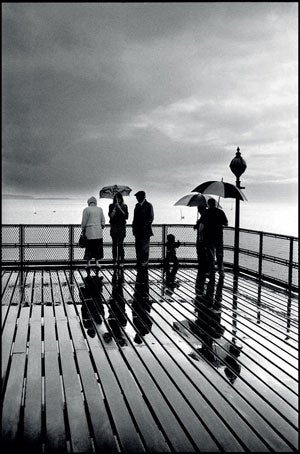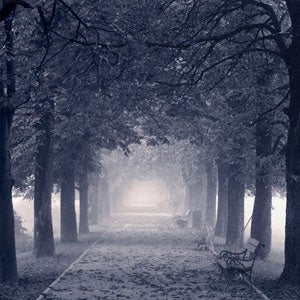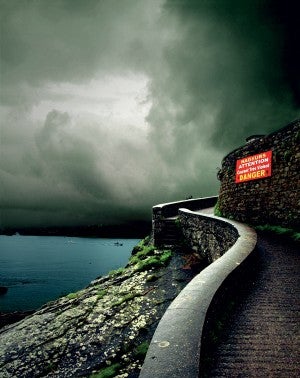Bad Weather Photograhy: The Coast
 8 The Coast
8 The Coast
The coast offers uninterrupted vistas, giving fantastic photo opportunities even in poor weather. Here, you can make captivating studies, chronicling the changing moods of land, sea and sky, or focus on aspects of geology, or on the power of the waves. If you opt for the latter, time your visit with high tide so that the waves are at their most energetic. A telephoto lens, ideally with stabilisation, can be a boon here. It will keep you well away from flying foam and help counter the wind, and its quality of compressing perspective will also build drama by making the various elements of the scene seem on top of one another. A tripod is a must too.
The coast is also a great place for people watching,even in bad weather, so don’t forget to keep an eye out for interesting candid shots. Seafront piers, promenades, and amusement arcades can all be a rich source of subject matter.
 9 Creative ISO
9 Creative ISO
In low-light conditions you might be tempted into increasing your ISO setting as a way of maintaining a faster shutter speed – perhaps to counter camera shake during handholding. While most modern DSLRs can painlessly accommodate a few ISO rises, when pushed into the higher reaches – figures such as 800 and 1600 – a degree of image degradation in the form of noise is inevitable. However, this seems a reasonable trade-off for such flexibility and was just as true of high speed films of the past. Nevertheless, even in dim situations noise can be avoided by using a tripod, setting a low ISO figure and putting up with a longer exposure. Indeed, this method produces far less noise than combining a shorter exposure time with a higher ISO. Compare the two yourself – it’s a fascinating experiment.
Indeed, if properly equipped we can pretty much use any ISO setting that we want. Consequently, the decision we face is more creative than technical. Or in other words, do we want noisy/grainy images or not? Certain treatments and subjects, those requiring a high degree of fine detail and smooth tone, obviously won’t suit excess noise. But there are those others that will positively thrive from the experience. Noise can be artfully applied to cityscapes and landscapes to add a gritty texture. It can also be employed for impressionistic effect with foggy or romantic views: imagine a lamp-lit street, a spooky graveyard or an ornate bridge striding across a river disappearing into the mist.
So, the next time that you reach for that ISO dial, make a decision for arts’ sake not just practicality you never know what might come of it!
 10 Broody Landscapes
10 Broody Landscapes
Poor weather is the best time to shoot low-key landscapes – images in which the majority of tones are dark. The dark clouds that aprear just before or after a storm can help create a terrific sense of impending doom, when combined with the right subjec matter.
Choose your view well, making sure you have a strong focal point. Graphic compositions like this one tend to work best. You can darken a sky even further if necessary by using a graduated Neutral Density (ND) filter. Bias your exposure in favour of the highlights, letting the other tones slip away into nothingness.
Photoshop can also enhance a low-key image. Use the Levels control for overall darkening and contrast control, and the Dodge and Burn tools for tidying up small areas, while the Vignette facility (Filter > Distort > Lens Correction) can be very effective in adding a dark periphery to a shot.




